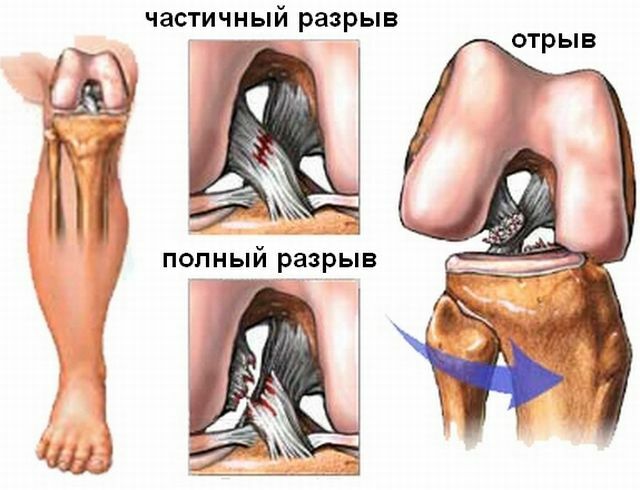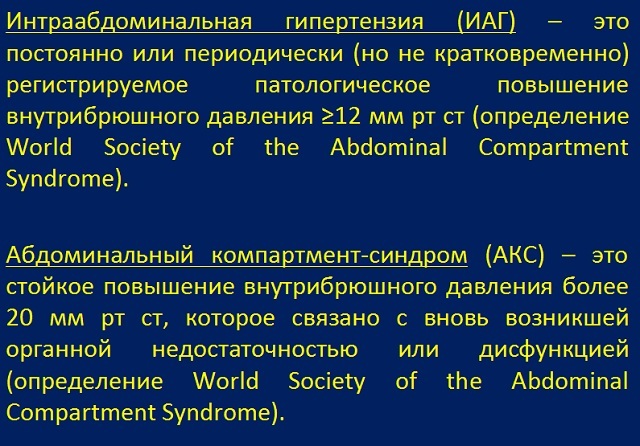 In comparison with the tibia small looks like a relatively thin, slightly spirally twisted trihedral needle, "attached" to it from the outside.
In comparison with the tibia small looks like a relatively thin, slightly spirally twisted trihedral needle, "attached" to it from the outside.
But the word "small" does not mean: unimportant, inessential. For without it there would be no shin( a two-bone system similar to the forearm), nor an ankle joint. After all, like the radius of the forearm, the tibia, thickening downwards, the flat protrusion of its head forms the outer ankle of the ankle joint.
But, unlike the forearm, the mobility of the tibia is relatively limited relative to each other - pronation and supination are not possible here. After all, the ways of joining the bones in these two similar systems are different, and this is of decisive importance for understanding the mechanism of fracture of the fibula.
Contents of the article
- Anatomical overtones of
- What provokes fibula fracture
- With and without displacement
- What will indicate the trauma?
- Deliver and refine the diagnosis - the first objective of
- Immediate onsite assistance
- How the bone is spliced ...
- . .. and how long it fuses
- Possible complications and consequences
- How to protect bone from fracture
Anatomical overtones of
The heads of both bones of the shin( both above and belowbelow) are connected together by means of almost flat joints. Therefore, free 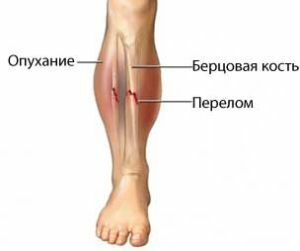 slip heads for each other here - there is a semi-mobile connection with their very tight prileganiya to each other.
slip heads for each other here - there is a semi-mobile connection with their very tight prileganiya to each other.
However, both the proximal( above) and distal( bottom) fibula heads have real articular surfaces and articular cavities in the form of narrow slit-like spaces.
And the small bone is not spliced with a big tight, but has little freedom of movement relative to it. For a special strength of their connection is a tightly stretched between them, a strong fibrous membrane - the interosseous membrane.
It remains to add that in the formation of the knee joint the upper head of the fibula does not participate, and on the inner surface of the external ankle there is an articular surface for connection with the talus bone - part of the ankle joint.
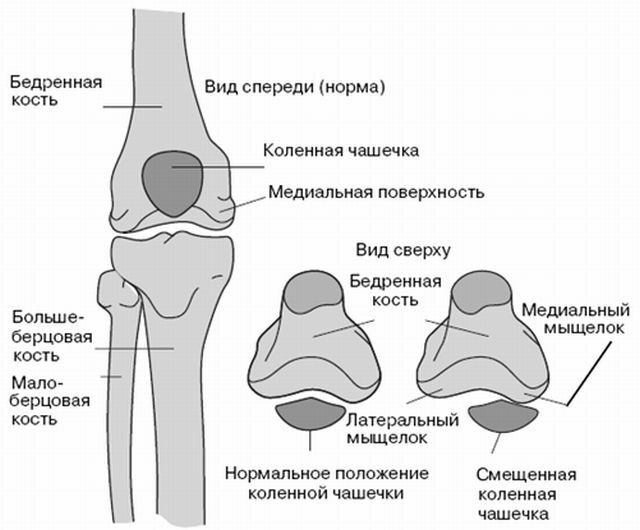
What provokes fibula fracture
According to statistics, most fractures of the tibia occur:
- when falling( to the feet) from height;
- as a result of a direct ramming strike on the outer half of the shin( blow by the car's bumper);
- from "screwing" movement with the fixed shin( as in the leg with the ski on).
To the question: why is this happening( why is the epiphysis broken or is it happening in the neck area)?. .. the sewing pin is a wire with a spring-ring tightened by a ring-spring.
Pressing on the free end( imitating a talant strike), open the pin and get a fracture model in the neck area( top or bottom).The same happens when the pin is squeezed along the longitudinal axis or twisting it - it is unfastened.
But, unlike its metallic similarity, the shin bone is connected also by the interosseous membrane fastening them, then what happens to the 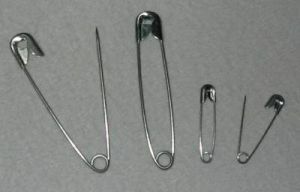 with it? The answer is simple: under the action of a fast application of considerable force, it breaks( most often at the bottom).
with it? The answer is simple: under the action of a fast application of considerable force, it breaks( most often at the bottom).
A hammer blow on the chisel, cutting the same part, shows a fracture in the middle part of the epiphysis, and with a discrepancy-displacement of bone fragments.
The cause of the fracture does not necessarily have to be a trauma - it can also be a bone lesion with osteomyelitis, sarcoma or a "depression" of its structure due to osteoporosis.
Fracture of the external ankle occurs according to one of the "scenarios".Either:
- of the foot should turn into the outer( pronation) or the internal( supination) side( which often happens during the glaze);
- the area of the ankle should be strongly compressed-squeezed( for example, in case of a road injury);
- requires a direct blow to the ankle with a heavy object( including its fall on it);
- should occur rotation( forcible rotation) of the foot inside or out( sports, especially - ski injuries).
With and without offset
Having examined the fracture mechanism on the wire-pin model, it remains only to list its possible types depending on the point of application of the destructive force.
- in case of a hitting impact can be transversal ,
- when falling to the feet( or with a direct hit) with a fragmented or even fragmented ( with fragmentation into a large number of fragments),
- with the spiral tucked( or fixed).
With a breakdown of fragments, the injury is called a fracture with a displacement, without such a divergence fracture of the fibula without bias. Fracture is not at full depth of the bone is a crack. Curious fact: the most common fracture of the external ankle( at any height) also refers to fracture of the fibula.
What will indicate an injury?
As with any fracture of any other bone, the destruction of the tibia as a result of trauma causes pain and limb function( you can not step on your foot without pain).
But the pain does not always appear. In elderly people with a lower pain threshold at a fracture as a result of sarcoma, sensations may be weakly expressed.
The same happens with damage to the peroneal nerve - the outer surface of not only the lower leg, but also the feet "grow numb", loses sensitivity, and when the nerve stops, the foot hangs, it can not be bent.
The protruding bones from the wounds( or visible in it) eloquently speak about an open fracture of the fibula.
To set and clarify the diagnosis - the first purpose of
To diagnose a simple examination and feeling the injured area is often not enough( the hematoma still does not say anything).

In the photo, the place of the fracture of the tibia is indicated by the arrow
. The palpation of the affected area is not available due to the thick layer of the muscles covering it, it may not manifest itself as a pain with incomplete fracture( fracture).
She will be "silent" and as a result of the shock experienced by the victim( who was trapped in the "fever" can even walk, stepping on the damaged leg).
Either the same thing will be observed because of an uncritical attitude to the victim, who does not feel that way( reducing the pain threshold from the excess of alcohol taken, from taking the drug, due to senile senility).
Indirect confirmation of the diagnosis can serve and described by him the mechanism of damage, and the general condition of the victim( a picture of shock), and the condition of the tissues at the site of injury.
But "put the final point" in this issue can only X-ray, showing:
- violation of bone integrity( fracture, crack);
- for a fracture - the type and nature of the fragments, as well as the degree of their displacement.
Immediate assistance on site
But for the production of a picture, the victim must first go to a medical institution, and this does not always happen quickly. Therefore, before the arrival of the medical service, the patient must provide immediate assistance on the spot( first aid).
Its activities should be aimed at reducing the severity of pain shock. Since its source is a damaged limb, it is necessary to minimize pain in it as much as possible.
For this, the limb is immobilized - giving it the most gentle position with fixation in it.
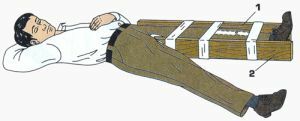 For the purpose of immobilization, any means at hand are used: a board, a stick, a rake, a pipe cut, a strip of plastic sheet - everything that can be attached and bandaged to the limb, so that the bottom bone fragment does not move while remaining in place.
For the purpose of immobilization, any means at hand are used: a board, a stick, a rake, a pipe cut, a strip of plastic sheet - everything that can be attached and bandaged to the limb, so that the bottom bone fragment does not move while remaining in place.
If nothing is found, you can carefully bandage the affected leg to a healthy one.
General rules for immobilization: the cessation of movements in at least two joints( above and below the damage) and the presence of a lining( insulation material) between the tire and the body.
In order to reduce the edema of the injured area, if possible, it is cooled by applying snow or ice( not to the naked body!), The very one in shock must be warmed, covered with heat and watered with a hot drink.
When bleeding from a wound above it, a tourniquet or a twist from the improvised material( with a mandatory insertion of a note on the time of application of the hemostatic agent) and an aseptic dressing on the wound are superimposed.
If possible( and after excluding the suspicion of intolerance), you can give the patient an anesthetic.
How the bone is spliced ...
The goal of the treatment is not only restoration of the integrity of the broken bone, but also the possibility of further confident use of the lower limb.
The most simple and effective means of bone consolidation is its immobilization by applying a cast bandage. As the 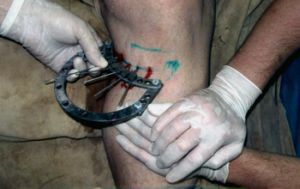 is needed, monitoring of the adhesion process is performed by performing an X-ray examination of the bone.
is needed, monitoring of the adhesion process is performed by performing an X-ray examination of the bone.
When the fragments are displaced, they must be returned to their place - the reposition, the fragments themselves can be fastened by applying a plate fixed with screws.
The maximum efficiency in treatment and reduction of its terms allows to achieve the use of the Ilizarov apparatus.
. .. and for how long it fuses
The recovery time of the integrity of the fibula may depend on both the nature of the fracture and other factors:
- on the speed and qualification of first aid;
- on the age and general health of the patient;
- from the seriousness of his attitude towards medical recommendations,
Occupies a rehabilitation period on average 2-3 months( with a fracture with a shift of up to 6 months), the formation of the bone callus  occurs usually after 6 weeks of treatment.
occurs usually after 6 weeks of treatment.
Measures to accelerate rehabilitation after fracture of the fibula may include exercises and apparatus effects aimed at improving blood circulation in the affected limb, restoring the tone of its muscles and improving the mobility of the joints( massage, exercise therapy, physiotherapy).
The main condition for success of rehabilitation is strict adherence to the recommendations of the attending physician.
Possible complications and consequences of
Since the main load in the tibia falls on the tibia, the consequences of fracture of the peroneal bone are most often associated with the patient's frivolous attitude toward his condition and with "early walking" on the aching leg.
These include:
- consequences of improper intergrowth in the form of shortening of the affected limb;
- no fusion( or slow fusion) of fragments;
- development of arthritis or osteoarthritis in the injured joint.
To complications of the same fracture should be classified:
- damage of the peroneal nerve;
- infection of an open wound;
- vascular complications( up to fat embolism in case of an open fracture).
How to protect bone from fracture
To prevent fractures in general( and the lower extremity in particular), you must carefully consider what is under the  feet and what is on your feet.
feet and what is on your feet.
The first condition means: watch where your feet are going( make sure that your legs obey the head, and not vice versa, do not walk around the house and out of it in distraction and deep detachment).
Second - shoes must be "right"( in size, season and comfortable), especially - special shoes: sports, skates on rollers or just skates( for ice skating).
If these conditions are met, as well as regular medical examination, the bones will be intact.


